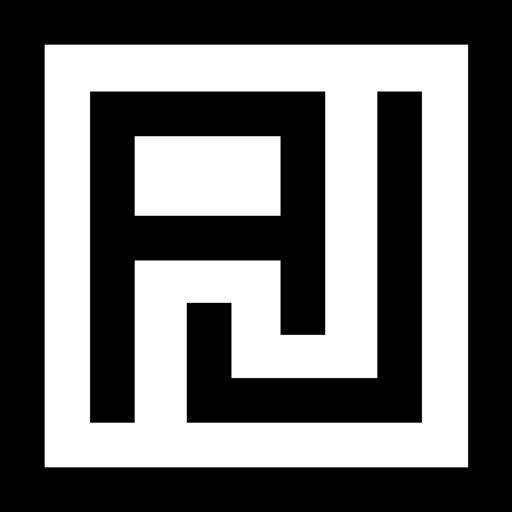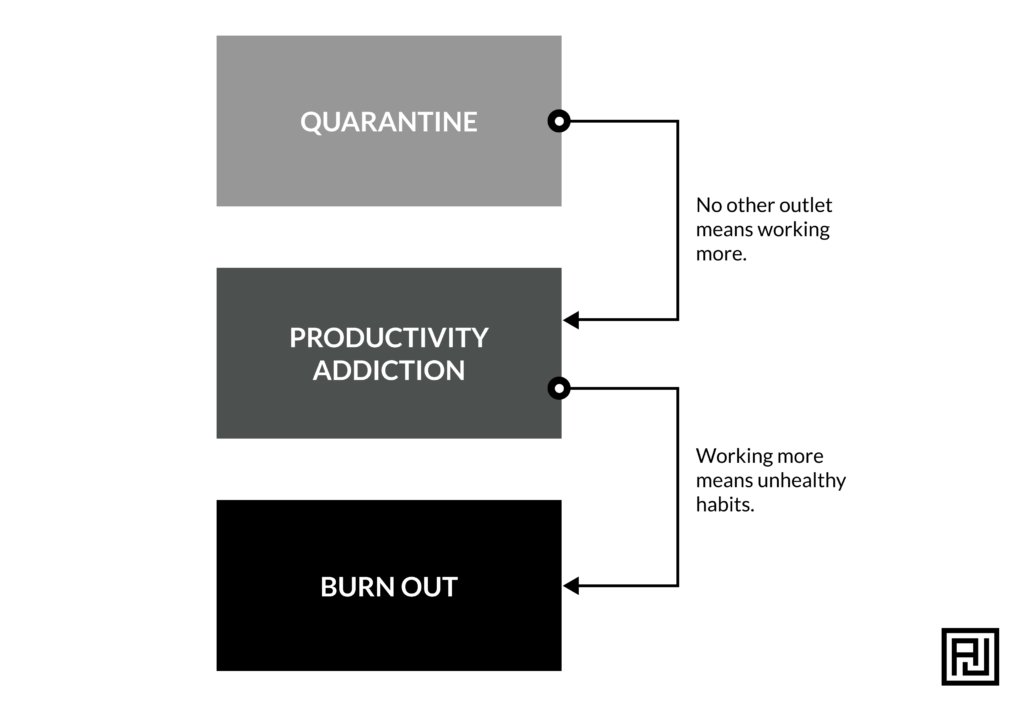The end of 2020 couldn’t come soon enough. With quarantine, I feel like everyone has been steadily worn down, both mentally and physically. For those that have been working from home during this period, it’s been an interesting experience. On the one hand, I know that I’m lucky to have been able to keep working during such difficult times, but it certainly came with some hidden costs.
In the beginning, the transition to remote work was actually enjoyable. I was surprised by how productive everyone was and the novelty of it all was a nice change of pace. I always thought it would be a messier transition, so this was eye-opening in many ways. The video calls, new hobbies, and different ways we were spending our time was, dare I say, fun. Little did I know what was to come as the year progressed.
The first noticeable change was the cadence of the work day. Before I had clear events that defined the start and end of the day. The most obvious of these being the daily commute to and from the office. Working from home meant there was no such thing.
No more commuting? Great!
No clear start or end of the work day? Not so great.
I used to be locked in as soon as I got to the office, but that distinction no longer existed. Instead, it was more flexible, which was great in the beginning. Having the ability to run a quick errand or cook a meal in the middle of the day was a nice change of pace. These hidden benefits also resulted in another growing change – the fact that every waking hour was becoming part of the work day.
I was always connected. Always ready to respond to the next email, text, or slack notification. The concept of a workday or even a weekday was obliterated. Every day was the same. Weekends lost meaning.
Beyond the cadence of the day itself, the reality of work from home was very different from the expectation. Everyone has this idea of what a WFH day actually looks like and this may have been true before quarantine, but when everyone is remote, it’s very different.

In a world where you’re stuck at home, there are only so many ways to spend your time. At first you may have read more or played games or mindlessly scrolled through social media or binge watched tv shows. But over time all of that transitioned towards work. This is far from surprising. When the lines are blurred between your personal time and your work time, combined with always being connected, there really is only one outcome.
And this only got worse as winter rolled around and the days got shorter and shorter. No longer could you count on mother nature to signal the end of days. The sun was setting by 4 PM and you still had work to do. Once you missed that window, it was easy to be lost in the work until you realized it was 8 PM and you should really figure out dinner.
What’s crazy is that you didn’t really notice it. Quarantine warped our sense of time in many ways and the outcome was longer work days that crept up on us in a very passive way. As the weeks and months of quarantine passed us by – the toll started to accumulate. I believe almost everyone who was in this sort of situation fell prey to productivity addiction in one way or another.
Productivity addiction is essentially when the brain becomes addicted to productivity. We crave recognition for work, completing tasks, and meeting aggressive deadlines. It gives us a sense of accomplishment. And it’s not very surprising, as we had little else to do during lockdown.
Normally we’d find satisfaction from other experiences like traveling or hanging out with friends or going to concerts or grabbing a drink, but such outlets no longer existed. The alternatives, such as more mindless screen time, seemed like an even worse option. Instead, we worked to fill the time, to cope with the void of these alternatives, which only exacerbated the problem.
We worked more and probably got addicted to productivity along the way, but what better way to deal with quarantine? Except that this type of behavior has diminishing returns. It starts to impact you mentally, physically, and emotionally.
In short spurts, this isn’t so bad. But when it carries on over an extended period of time (like all of 2020), then it really adds up. There’s no escape. Nowhere to go. No one to see. Nothing to do. It’s unsustainable and eventually turns into burnout.
The Reality of Burnout
Before we go deeper, let’s understand what burnout is. Burnout is largely related to work, but can manifest from other parts of life. To put it dramatically, burnout is the death of motivation. You don’t have the drive to do the work. You’re tired, cynical, and lacking in confidence. And this only gets amplified by stress.
I felt this way over the last few months of 2020, but I didn’t realize it until later. It’s hard to notice when you’re in the middle of it all, but the signs were there. I was always tired, lacking in motivation, and mostly just going through the motions, but despite it all, I kept chugging along because I was addicted to it.
The tell tale signs of burnout include:
- chronic fatigue/insomnia/being overly tired
- lacking motivation to do things/doing the bare minimum
- being cynical about work and life
- feeling like your work is suffering (not meeting your personal standards)
- hating your job/not getting satisfaction from your work
- feeling useless/depressed/anxious/stressed
- easy to irritate – everything gets under your skin
- trouble focusing, your mind wanders
- headaches or pain in your gut (that knot in your stomach)
- loss of self control that lead to bad habits (alcohol, drugs, diet)
Any and all of these can be symptoms of burnout, especially when they occur over extended periods of time. And while burnout is largely related to work, the circumstances of the year didn’t help anyone.
Quarantine has made it harder to take care of yourself in many ways: physically, mentally, and emotionally, while adding on a heap of stress about all the things. Ultimately, everything was out of balance, but you didn’t quite realize it. So how do you deal with and/or avoid burnout in the new year? I believe there are three steps.
1. Reflect
The first step is reflection. You have to recognize it, before you can do anything about it. When I finally took time to do this, I realized my life was very much out of balance. The things I did to keep me sane before, were simply not happening. I wasn’t being active. I wasn’t connecting with friends and family. I wasn’t writing.
It was all work, all the time. Realizing this is step one.
2. Rest
Before you dive in and try to fix it right away, as I’m sure you all want to do, you need to give yourself a chance to recover. The next course of action then, is to rest. Step away from work, disconnect, and try to reset.
You need time to bounce back from the burnout, without making it worse. Don’t work, don’t try to start new habits or hobbies, don’t stress and worry about things out of your control, just take things easy and keep it simple.
You know yourself best, so whatever helps you disconnect is what you should make time for. Maybe it’s being in nature or a spa getaway or just getting away from screens, to each their own. The critical piece is you’re allowing your mind to disconnect from the grind of work and treat yourself.
I was fortunate enough to have a holiday break between Christmas and New Years, where I did exactly this. Simply disconnected for a full week, my only real vacation of 2020 and it couldn’t have come at a better time.
3. Rebuild
Finally, you have to rebuild your foundation. And not starting with work, but with the habits, experiences, and routines that will keep you sane. These are things you can’t sacrifice, to ensure you don’t end up in the same place again.
Some of the things I started doing in the new year were committing to an early morning writing practice again, staying in touch with friends and family, and going for daily walks.
These small efforts have helped me create balance again and I can already see the changes paying off. I have a clearer head, I’m rediscovering my creativity, and am overall in a better mindset. These things don’t have to be strict, but they do need to exist. You need ways to break out of the cycle and keep yourself fresh.
These are some additional ideas that you can explore or implement in your own day to rebuild your foundation:
- Disconnect from work at a certain time
- Take mini vacations when needed
- Be active/workout
- Eat better
- Schedule time for your hobbies
- Take an actual lunch break
- Designate time for self-care
- Read more books
- Take walks
- Be in nature
- Connect with friends and family
- Explore and create new things
- Shift your role at work to re-discover excitement
- Get more sleep
Some of these may be more difficult during quarantine, but prioritizing just a few of them can make a huge difference on your mental health and keep you in better balance over time.
Burnout is not about giving too much of yourself, it’s about trying to give what you do not possess.Anonymous
In the end, all of this is interconnected and while quarantine is not a necessary variable, it certainly had a major role to play in the last year. Lockdown to productivity addiction to burnout is a natural progression that we must be mindful of.
So if you’re feeling out of sorts, tired, exhausted, and ultimately burned out, take the time to follow these steps.
Find the time to reflect on the past several months. Recognize how you’ve been spending your time and what parts of your life may be out of balance. Try to take some time off to properly rest and recover. Give yourself the opportunity to clear your head and reset. Finally, figure out how you can prevent yourself from falling into this same trap again. Build habits and routines that keep you balanced and of a sound mind, body, and soul.
It can be easy to dismiss, but the downside can be pretty painful. Don’t let burnout take hold of your life.
Links
https://www.verywellmind.com/stress-and-burnout-symptoms-and-causes-3144516#what-is-burnout
https://www.psychologytoday.com/us/blog/in-excess/202008/productivity-addiction

